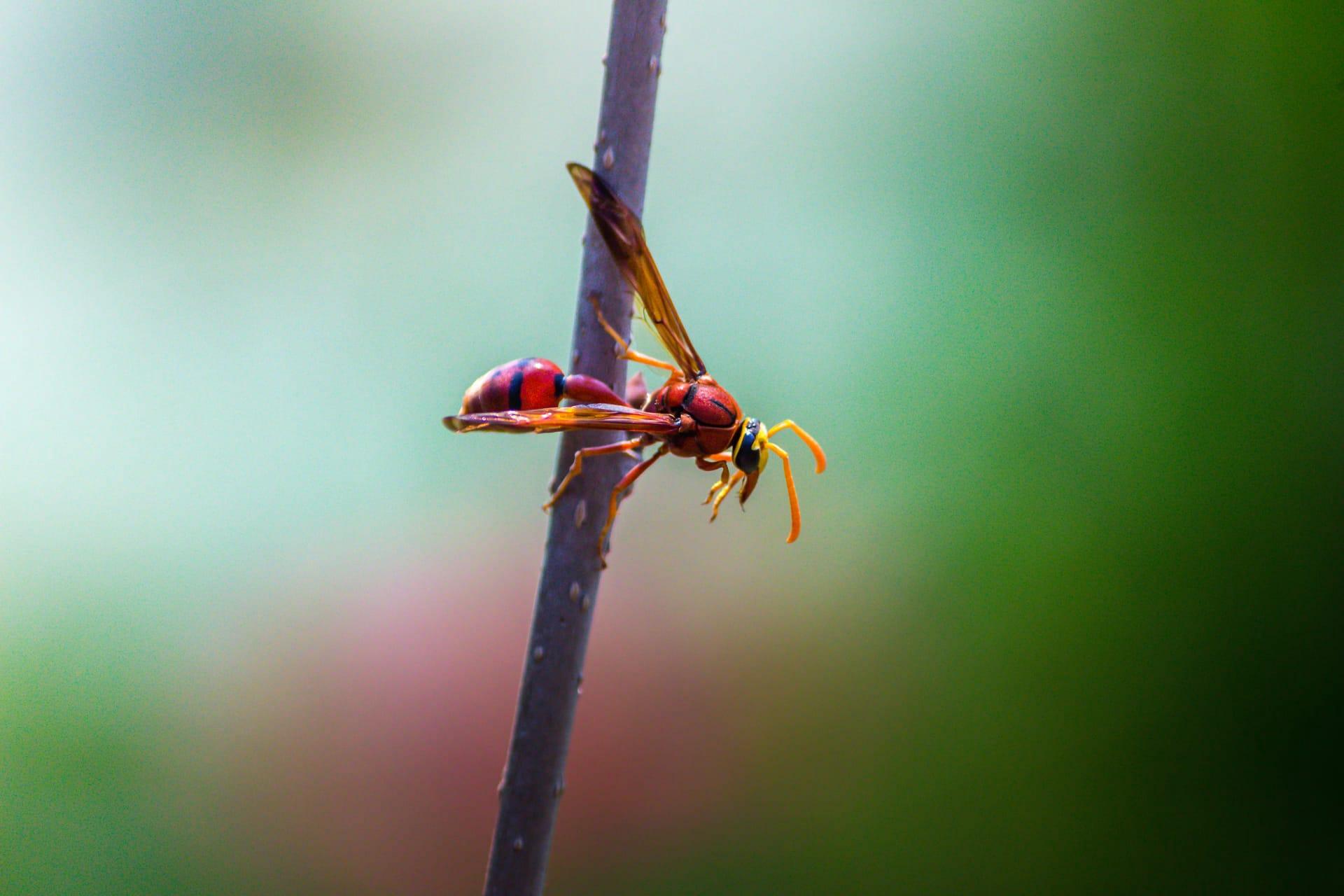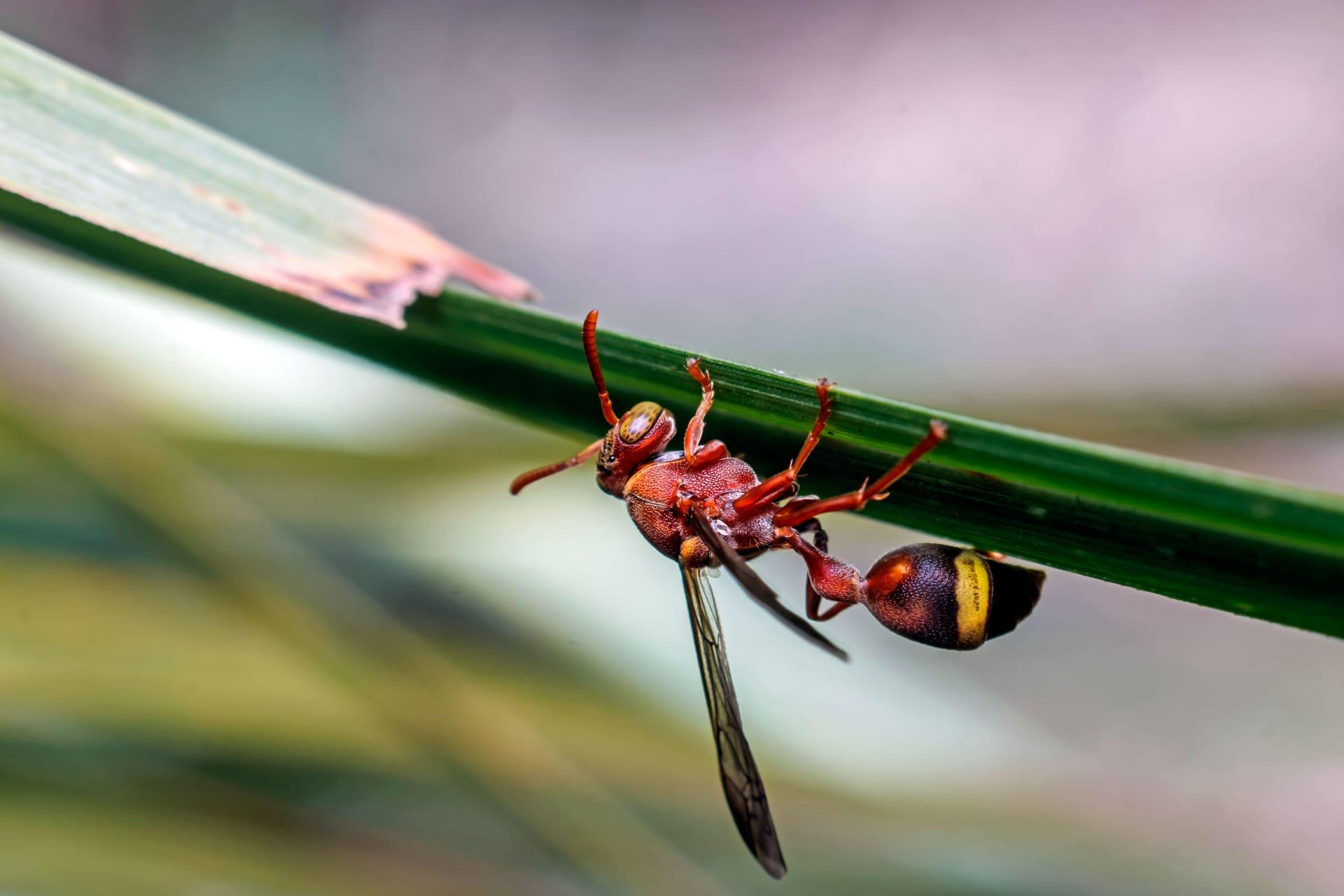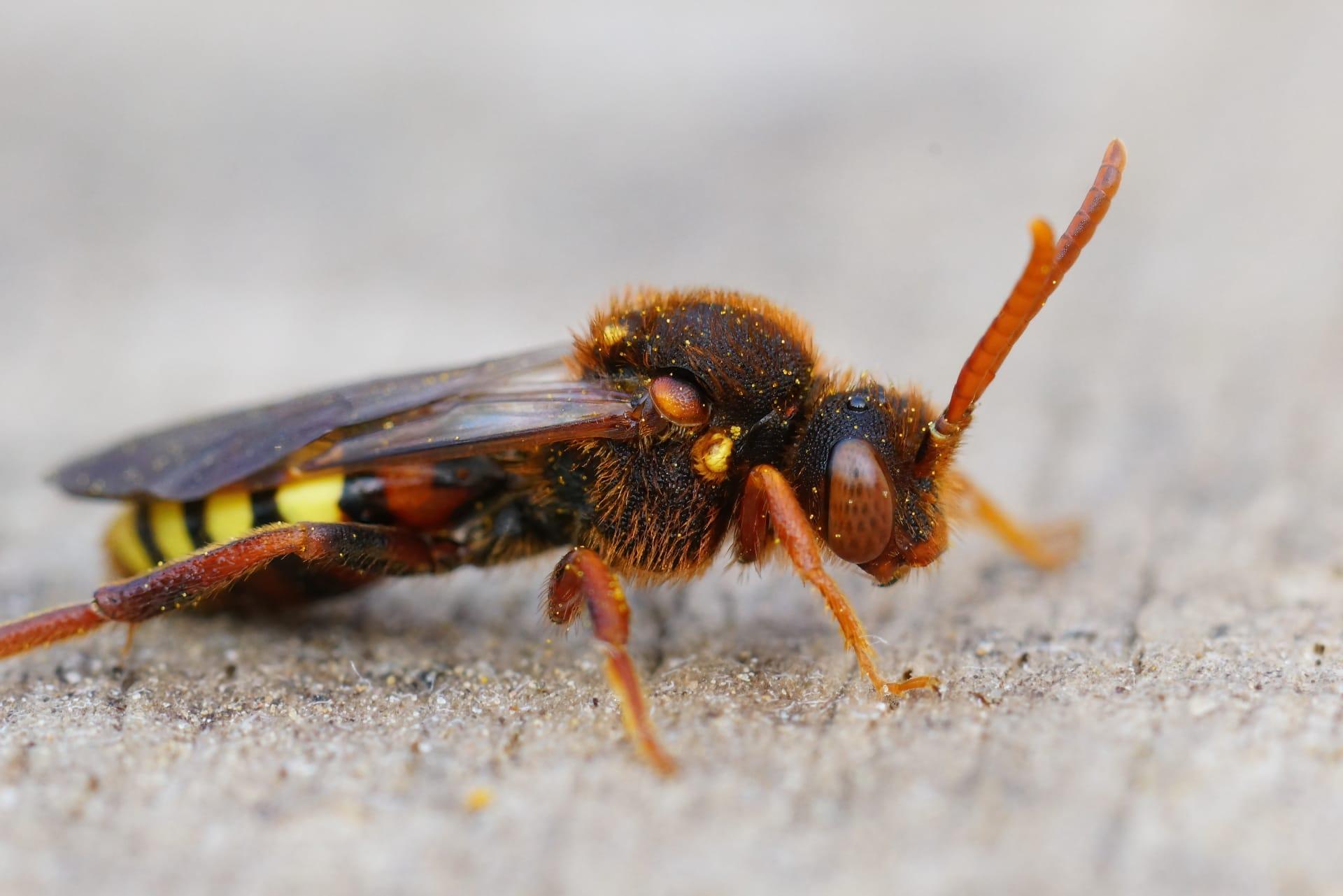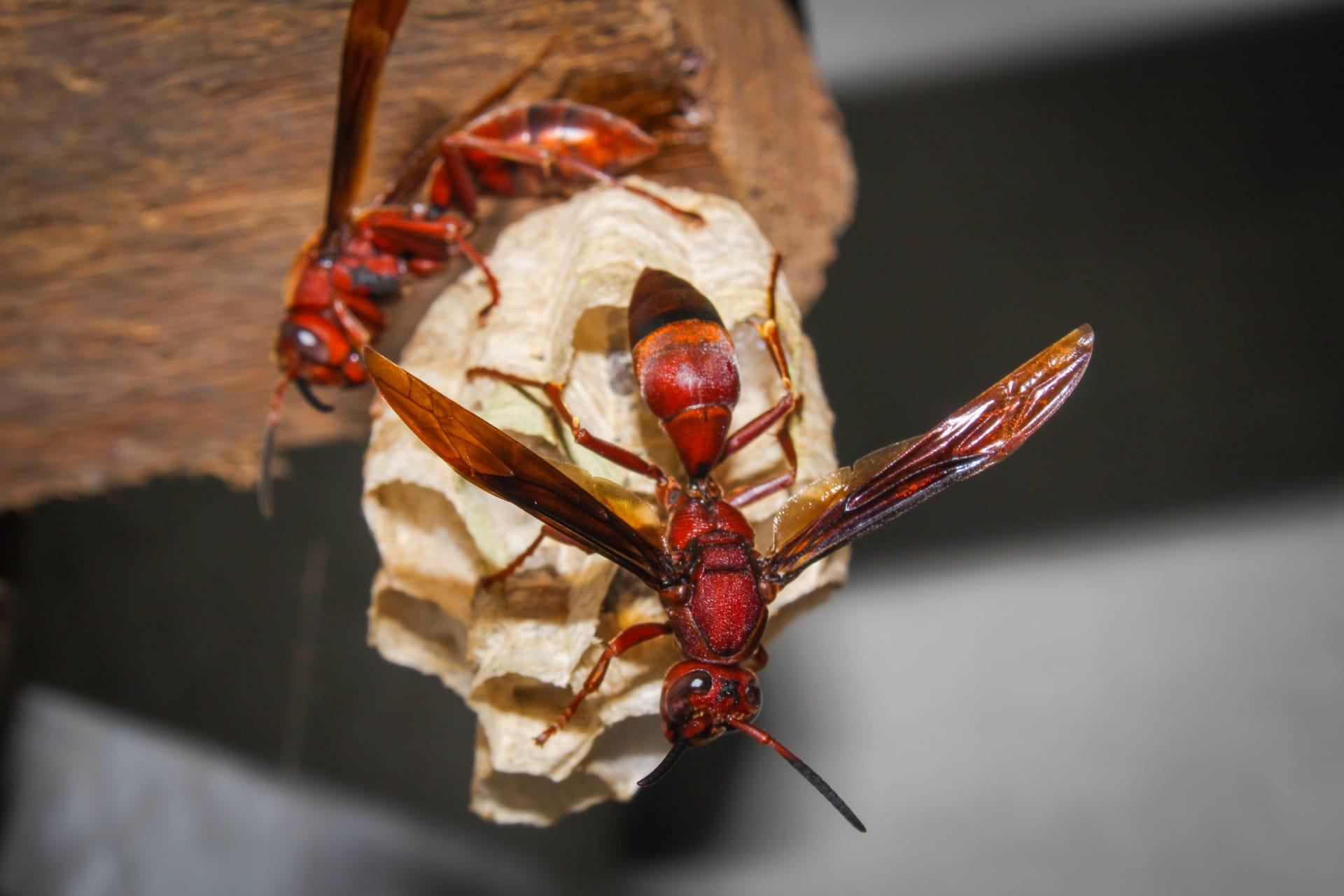1
Red wasps, scientifically known as Polistes carolina, showcase a fascinating social structure. Their colonies, typically housing around 3,000 to 8,000 individuals, are matriarchal societies. Here, a single queen, easily identified by her larger size, dominates. Her primary role is reproduction, while the worker wasps, her daughters, handle tasks like foraging and nest maintenance. This division of labor ensures the colony's efficiency and survival.
Another intriguing aspect of red wasps is their nest architecture. These nests, often found under eaves or in sheds, are made from chewed wood fibers mixed with saliva, creating a papery substance. Remarkably, a single nest can house multiple egg-laying queens, which is unusual for wasp species. This cohabitation is possible due to the queens' relatedness, usually being sisters, which reduces conflict and promotes cooperative breeding.

2
Red wasps have a unique way of regulating their nest's temperature. On hot days, they collect water and spread it across the nest. As the water evaporates, it cools the nest, similar to how sweating cools our bodies. This natural form of air conditioning is crucial for larval development, as extreme temperatures can be harmful.
Their diet is another point of interest. Adult red wasps primarily feed on nectar, making them accidental pollinators. However, they are also proficient hunters, preying on caterpillars, flies, and other small insects to feed their larvae. This dual diet not only sustains the colony but also contributes to controlling pest populations, benefiting gardens and crops.

3
Communication within red wasp colonies is highly sophisticated. They use pheromones, chemicals that convey messages, to coordinate activities and alert others of dangers. When a wasp discovers food or a threat, it releases specific pheromones that guide others to the location. This efficient communication system is vital for their survival and success as a colony.
Red wasps also display remarkable memory abilities. Studies have shown that they can recognize individual faces of other wasps, a trait rare among insects. This facial recognition helps maintain social order within the colony, as they can identify and remember the roles and ranks of other members.

4
The sting of a red wasp contains a cocktail of chemicals, including a pheromone that alerts nearby wasps to danger. When one wasp stings, it releases this pheromone, which can incite other wasps to become aggressive and join the attack. This defense mechanism is why disturbances near a wasp nest can quickly escalate.
Red wasps play a crucial role in their ecosystem as both predators and prey. They control pest populations by hunting various insects. In turn, they are preyed upon by birds, reptiles, and other insects. This predator-prey dynamic helps maintain the ecological balance, showcasing the red wasp's integral role in nature.

5
Red wasps exhibit a unique behavior called "pedicellate grooming." When they return to the nest after foraging, they perform a meticulous cleaning routine. They use their mandibles and legs to remove any parasites or debris from their bodies, ensuring they don't introduce contaminants into the nest. This behavior highlights their commitment to colony hygiene and health.
The lifespan of red wasps varies significantly between roles. Worker wasps typically live for several weeks, focusing on foraging and nest maintenance. In contrast, queens can live for up to a year, their longevity attributed to their protected role within the nest and their focus on reproduction. This difference in lifespan between queens and workers underlines the specialized roles within the colony, ensuring its continued survival and success.